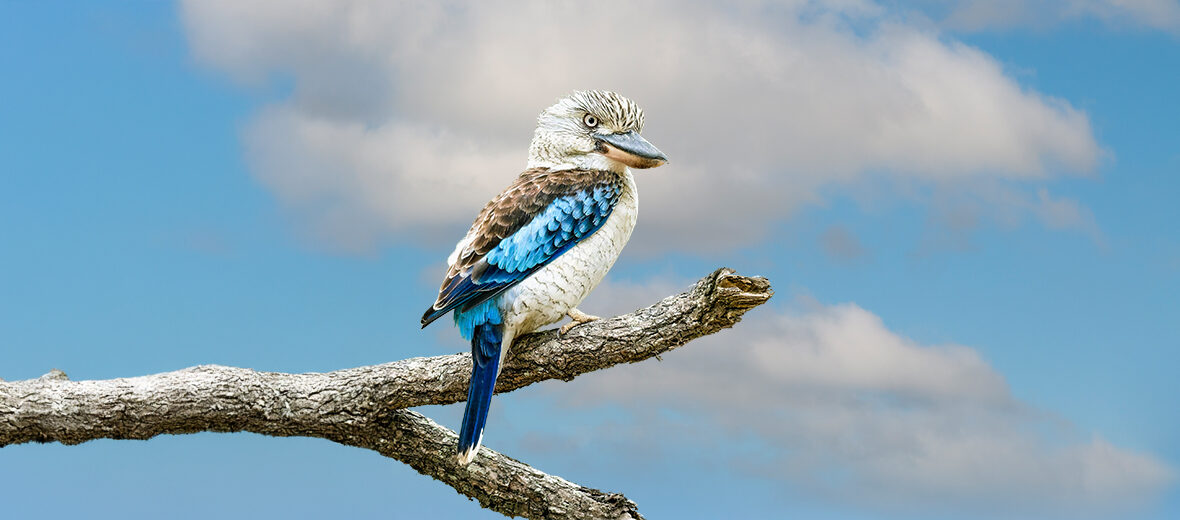
The blue-winged kookaburra, a larger species of kingfisher, hails from northern Australia and into Papua New Guinea. These birds face the threats of habitat loss and destruction due to farming, ranching, residential, and commercial developments; accidental poisoning; and vehicle strike (being hit by vehicles). However, they are abundant enough to be listed as Least Concern by the IUCN. Their population trend is listed as decreasing though.
First the Stats…
Scientific name: Dacelo leachii
Weight: Up to 11.64 ounces
Length: Up to 17 inches
Wingspan: Up to 28.35 inches
Lifespan: Up to 20+ years
Now on to the Facts!
1.) While initially being discovered by Sir Joseph Banks in 1770, they were described, officially, by Nicholas Aylward Vigors and Thomas Horsfield in 1826.
2.) Other common names include barking jackass, howling jackass, and Leach’s kookaburra.
3.) There are 4 recognized, but debated, subspecies: D. l. cervina, D. l. cliftoni, D. l. intermedia, and of course D. l. leachii.
4.) Their call is typically described as a maniacal cackling or barking sound.
5.) They tolerate open savannah woodlands, Melaleuca swamps, and farmlands (specifically sugarcane plantations).
But wait, there’s more on the blue-winged kookaburra!
6.) In the wet summer months, insects, lizards, and frogs make up most of their diet; while the rest of the year they feast on arthropods like yabbies, scorpions, spiders, fish, earthworms, small birds, rats, and mice.
7.) Breeding season lasts from September – December.
Did you know…?
These clever and resourceful kingfishers have been documented waiting at the fire line of wildfires and picking off insects fleeing for their life.
8.) Females lay up to 4 eggs that hatch in up to 26 days.
9.) Nestlings fledge in up to 36 days.
10.) Hatchlings are often very aggressive during the first week of life, and the youngest chick is typically killed by the older chicks during this time.
But wait, there’s still more on the blue-winged kookaburra!
11.) As soon as they have fledged, juvenile birds need to be taught how to hunt by their parents for a further 6 – 10 weeks before they can adequately fend for themselves.
12.) Red goshawks and rufous owls prey on these kookaburras.
Now a Short Blue-Winged Kookaburra Video!
Be sure to share & comment below! Also, check out the Critter Science YouTube channel. Videos added regularly!

Want to suggest a critter for me to write about? Let me know here.
Some source material acquired from: Wikipedia & IUCN
Photo credit: Scott Williams




Leave a Reply